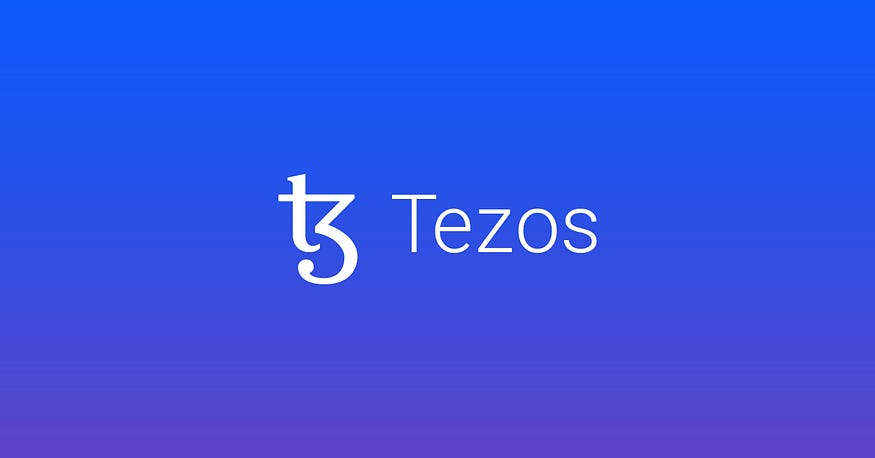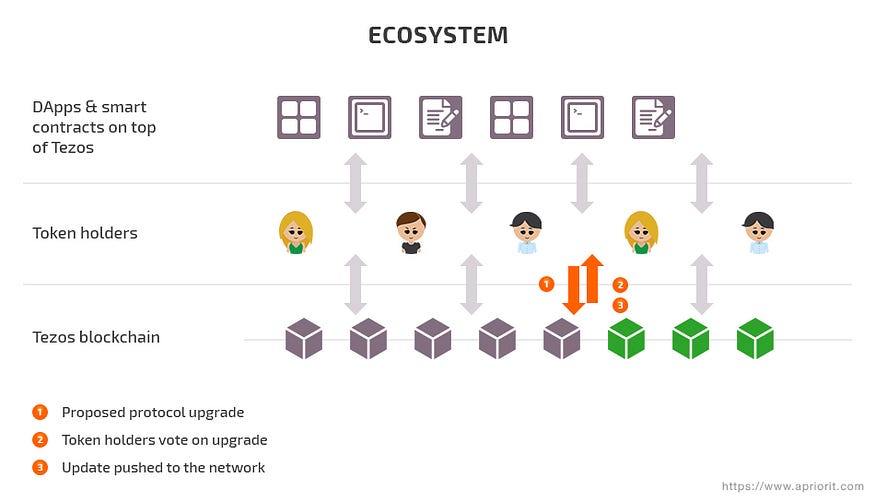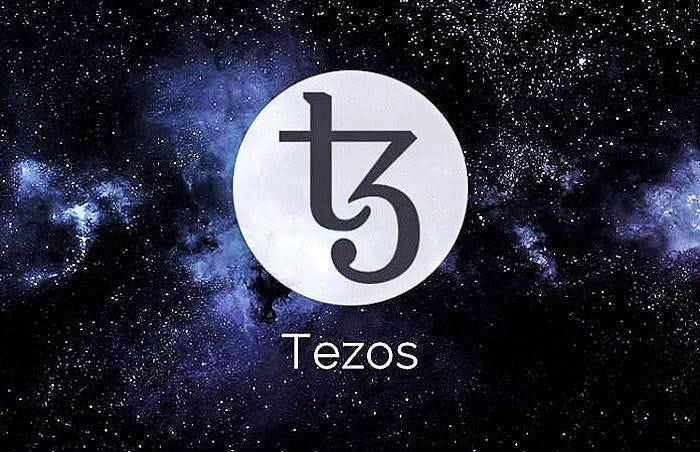
Tezos is one of the leading blockchain platforms for developing decentralized applications for high-value and high-security use cases. In July 2022, Tezos recently passed 10,000 new smart contract deployments, and the month isn’t even close to being over. The number of new smart contracts added to the Tezos blockchain in a single month has never been higher than this. With more than 5 days left in July, 10,158 fresh contract deployments have already been started. The Better Call Dev smart contract explorer has statistics for new contract installations here. So by this, we can see that Tezos is a blockchain designed to evolve.
1. What is the TEZOS blockchain?
Tezos is an open-source platform that addresses key barriers facing blockchain adoption for assets and applications backed by a global community of validators, researchers, and builders. Tezos is an energy-efficient blockchain where developers, artists, entrepreneurs, brands, and others from around the world build and engage with a network of decentralized applications. Tezos’ modular architecture allows for seamless, community-determined upgrades that deploy new advancements to fuel the next round of innovation. See for yourself what makes Tezos stand out as part of humanity’s digital future. By design, Tezos embraces long-term upgradability, open participation, collaboration, and smart contract safety.
2. How does Tezos blockchain work?

Tezos power a “Network Shell†to allow its self-amending cryptographic ledger features. To know what the blockchain protocols involved & want to know how Network Shell works? Here we will explain deeply:
There are 3 types of blockchain protocol layers:-
1. The Network Protocol
2. The Transaction Protocol
3. The Consensus Protocol
1.Network Protocol — The Network Protocol known as the “Gossip Protocol†is the way how transactions are shown across the network between nodes.
The Network Protocol also includes:-Downloading the Blockchain, Broadcasting Blocks to Networks, Detecting Peers.
2. Transaction Protocol — The Transaction Protocol is explained by the scripting language used in developing Cryptocurrency. For example, the Unspent Transaction Output Model (UTXO) in the case of Bitcoin. Following the example of Bitcoin, the transaction protocol includes the codes which mine Bitcoins and use digital signatures to identify and verify the transaction. All thing that is a part of executing a transaction happen is contained in the Transaction Protocol.
3. Consensus Protocol — The Consensus Protocol is a smart way used in Blockchain technology to reach consensus across all the nodes in the network. For example, Bitcoin uses Proof-Of-Work (POW) as its consensus mechanism. Tezos uses an advanced form of Proof-Of-Stake model known as “Delegated Proof-of-Stakeâ€
3. Know the key Features of Tezos :
- Institutional Grade Security.
- Tezos is designed to provide the safety and code correctness required for assets and other high-value use cases at both the protocol and application layers by leveraging languages OCaml and Michelson, which facilitate formal verification, a practice commonly used in mission-critical industries.
- Governance by the People.
- The Tezos platform was built with mechanisms to ensure active community governance and participation–a key component of Web3. Users can actively participate by evaluating, proposing, or approving amendments to Tezos. This empowers the type of collaborative innovation that keeps Tezos on the bleeding edge of technology, and it’s why Tezos is best positioned to underpin the Web3 revolution.
- An Energy-Efficient Algorithm.
- Unlike Proof-of-Work blockchains like Bitcoin or Ethereum, Tezos’ Proof-of-Stake requires significantly less energy and cost to operate, making it an ideal alternative platform for building eco-friendly blockchain applications. As the Web3 movement gains in adoption, scaling responsibly requires a more energy-efficient approach. Tezos delivers on this today.
- Smarter Smart Contracts.
- Tezos is one of the leading smart contracts Proof of Stake blockchains. Tezos smart contracts can use formal verification, allowing them to be mathematically verified, reliable, and secure.
- Seamlessly, Forklessly, Endlessly Upgradeable.
- Tezos is built to adjust, adapt, and add features and functionality through its proven on-chain upgrade mechanism.
- Powerfully Scalable.
- Tezos is built to remain state-of-the-art. Its modular architecture and formal upgrade mechanism minimize disruptions while offering regular upgradability and enhanced functionality over time.
4. Let’s know the advantages of using the Tezos blockchain.
- Tezos addresses key barriers in terms of smart contract safety, long-term upgradability, and open participation. Let’s talk about the advantages that Tezos blockchain offers
- Tezos utilizes the Proof-of-Stake consensus mechanism in which participants provide only the necessary computational resources to keep the network working. This is inexpensive as compared to other blockchains that use PoW and other PoS processes.
- Tezos blockchain allows any stakeholder to participate in the consensus mechanism and rewards for contributing to the security and stability of the network.
- Like other blockchain platforms, it allows blockchain developers to create smart contracts and develop dApps. Michelson, Tezos’ native smart contract language, facilitates formal verification, which is commonly used in mission-critical environments like aerospace, nuclear, etc. When it comes to safety and code correctness, Tezos claims to provide both for high-value use cases.
- Tezos aims to provide the safety and code correctness required for assets and other high-value use cases.
- Tezos possesses a modular architecture and formal upgrade mechanism. Or we can say that it is self-amendment that allows the network to propose and adopt new technological innovations smoothly as they emerge.
5. Tezos ecosystem:-

Tezos has a separate Developer Portal for developers which can be your starting point for developing the future of Web3 on Tezos. There you will find the education material, development tools, development resources, and community that you need to start building in the ecosystem. On tezos you will find the resources and building blocks that you need to build a decentralized application, you can learn different types of languages on tezos blockchain.
Top Tezos Ecosystem projects to look out for this 2022
Currently, inside the Tezos ecosystem, there are over 70 projects across various niches, ranging from infrastructure to DeFi. Five years after the XTZ release in 2017, the ecosystem is growing steadily when compared to other fast-moving blockchains such as Solana, Avalanche, and Terra.
As such, we have identified several projects in the Tezos ecosystem that could be (or already are!) fundamental to the development of its ecosystem. Whether they’re Defi protocols, dApps or NFT-related, tezos ecosystem includes 135 blockchain projects, 28 dApps, 24 Defii projects, 7 protocol projects, 5 education and 37 tool projects, 8 wallet projects and 16 team projects. we believe that these are all exciting subjects of analysis for those looking to participate in Tezos. Tezos’ smart contract formal verifiability, adequate and reliable performance, on-chain governance, and low overall energy consumption fit like a glove to alleviate companies’ concerns while adopting open-source blockchain solutions with no central governance authority
DEX.
QuipuSwap, Plenty Defi, SpicySwap, FlameDeFi, and Crunchy Network are decentralized exchanges on top of the Tezos blockchain. DEX is the most fundamental lego of any blockchain ecosystem. Therefore, it needs to attract liquidity from the outside to maintain sustainability.
QuipuSwap ($QUIPU): The biggest Tezos decentralized exchange
QuipuSwap is Tezos’ biggest decentralized exchange and the go-to dApp to purchase Tezos-born (FA2 standard) fungible tokens, charging only a 0.2% fee, which goes to liquidity providers. QuipuSwap is governed through the QUIPU token, a fixed-supply FA2 token that users will also use to pay for upcoming QuipuSwap services.
SmartLink ($SMAK):
SmartLink provides Trust-as-a-Service solutions, the chief of which is their decentralized escrow platform, aimed at businesses and individuals looking to establish international contracts and anonymous transactions between untrusted parties. Their roadmap includes a DEX, $SMAK staking, a lottery dApp, and a marketplace for goods, services, and NFTs using their decentralized escrow solution.
6. Tezos’s community support for developers.
last year, The Tezos ecosystem has launched a global grant program to encourage people to use the platform to develop their projects, ideas, services, and products on the blockchain. The program will reward grantees for their creations in addition to funding projects created through the Tezos platform. Tezos will avail up to $10,000 in grants to participants in North America at that ti,e However, the grant covers other regions through Tezos regional initiatives like Tezos Africa, Tezos India, TZ Connect, TZ APAC for the APAC region, Tezos Israel, and Tezos Commons.
On Tezos, developers can create powerful applications using tools that support a variety of programming languages. Game developers, music labels, NFT artists, sporting franchises, central banks, real estate developers, global NGOs, and more are all building on Tezos. Tezos has a growing Defi ecosystem with ERC-20 bridges for low-gas cross-chain utility, yield farming protocols, and surging AMM platforms.
Tezos Developer Portal is your starting point for developing the future of Web3 on Tezos. Find the education, tools, resources, and community you need to start building in the ecosystem.
TEZOS’s Different protocols upgrades.
Tezos Introduced Tenderbake, a new and significantly upgraded Tezos consensus algorithm, which enables fast finality and improved scalability for the Tezos blockchain. Introduced a variety of other changes that improve the baking experience, such as reducing the number of tokens required to be a validator, a rework of the baking and endorsement rewards mechanism, and more.
7. How to build on TEZOS?

Tezos has positioned itself as a developer-friendly blockchain platform. This means tezos is providing developers with various avenues to receive funding, Tezos is also equipped with multi-language support for both smart contract development and blockchain interaction via SDKs (software development kits). In addition to Tezos’ wide array of smart contract development languages, Tezos also has a variety of SDKs, or software development kits. If you’re not sure what the differences between smart contract development languages and SDKs are, here’s a quick walkthrough.
- Tezos Smart Contract Languages
- The Tezos ecosystem has a variety of smart contract languages for different kinds of developers. In this section, we’ll go over LIGO, SmartPY, and Michelson.
- LIGO
- LIGO is a high-level statically-typed smart contract language “designed for developing longer contracts than one would naturally write in Michelsonâ€. With LIGO, you can write smart contracts in a few different syntaxes.
- SmartPy
- SmartPy is a high-level smart contract language that lets Python developers get in on the Tezos action. Over the past few years, the Python language has experienced an explosive level of growth. Many rank Python as the fastest growing language in the world, and it’s used in a variety of use cases from powering Instagram’s backend to AI and deep learning.
- Michelson
- Michelson is Tezos’ “base language†when it comes to smart contracts. Whether you’re using LIGO, SmartPy, or another smart contract language, they all eventually compile to Michelson. Unlike the aforementioned high-level languages, Michelson is a lower-level language.
SDKs for Interacting with Tezos
- TezosJ
- TezosJ is a Java SDK for building decentralized applications on Tezos. Java is a very popular programming language, especially for enterprise applications. In addition to Kotlin, Java can also be used for the development of Android apps.
- TezosKit
- TezosKit is a Swift SDK for building apps for Apple products — this includes iPhone, iPad, Apple Watch, Apple TV, and Mac. TezosKit allows developers to write iOS, iPadOS, and macOS-native code to interact with the Tezos blockchain.
- ConseilJS
- ConseilJS is a JavaScript library that can be used to build decentralized applications that utilize the Tezos blockchain. If you’re unfamiliar with JavaScript, it’s the leading language for building dynamic web-based applications via React, Vue, etc
If you are a developer or an aspiring developer and want to build on Tezos, check out the dedicated development portal: https://developers.tezos.com
Conclusion
So by summing up the article Tezos is becoming a promising platform it has developed too much since it entered the community Tezos has a supportive developer community so it can be said that it offers an excellent opportunity to become the dominant chain. To conclude, that is all you need to know about Tezos and its NFT/Gaming-focused ecosystem. We hope you’ve gained valuable insights into the tezos blockchain





0